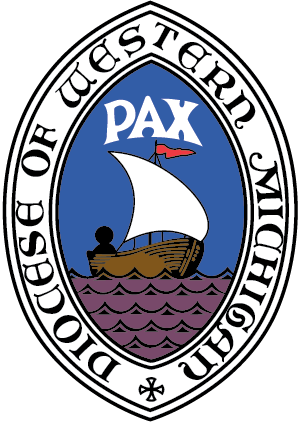Feast Days with Bishop Skip | The Transfiguration
Note that the event of Jesus’ transfiguration begins with him in prayer. How could it be any other way? The whole experience in Luke’s account is bracketed by Jesus pointing toward the way of the cross and his eventual death. He enters into prayer as he offers himself to a centered conversation with God whereby he might gain clarity about his mission on earth. Jesus’ “departure,” or even better, “exodus,” which he is to accomplish at Jerusalem, signifies his unique role in salvation history. The way of Jesus, the way of giving oneself away as an offering of love and in thanksgiving for the gift of life, is the way for all.
The Transfiguration gives us a window through which we are able to catch a glimpse of Jesus’ identity continuing in the fullness of the Law and the Prophets as known through Moses and Elijah. We are also given a view, as the veil is pulled back a bit, of the purpose of all humanity. There are gifted moments in life when we are able to see most clearly, unitive experiences if you will, when we know to the very depths of our being why we are here, for what we were created, and that in our human experience we know ourselves held by a love that knows no bounds.
I had such an experience in a systematic theology class when my professor shared with us a particularly sacred and tender moment in his life. While out to dinner with his wife, he got a phone call to return home immediately where a baby sitter had been caring for his young child. They learned that in a horrific accident in the home and through no fault of the baby sitter, their beloved child had died. These words from my professor were indelibly marked on my soul that day when he said, “I have been to the bottom and the bottom is firm.” It is firm because of the One who holds us and just as with Jesus, calls us beloved.
It is something of the quality of that awareness that Jesus knew on the holy mount. He was completely and transparently in that moment so drawn by grace into the fullness of his humanity that his divinity could not help but become evident as well. This is why in the end, in Christian understanding, there is really only one sacrament—Jesus the Christ. He is the outward and visible sign of the inward and spiritual grace of God. Any other sacramental expression is only so to the degree that it manifests Christ himself and as it draws us to the place where we know our own Christ-likeness.
One of my spiritual practices is to look for how a person has been a sacrament in his or her life, a window through which we catch a glimpse of the beauty of God and that to which Jesus points. This often plays out when I am reflecting on a life in preparation to preach at a funeral. A dear friend died recently. When pondering his gift to me, I realized that in his presence and his own broken humanity, I always knew I was loved. In this way he portrayed Christ to me—no question. This is God’s gift to Jesus in his transfiguration. It is God’s gift to us in Christ. It is to be our gift to the world.
Tenga en cuenta que el acontecimiento de la transfiguración de Jesús comienza con él en oración. ¿Cómo podría ser de otro modo? En el relato de Lucas, toda la experiencia está marcada por el hecho de que Jesús señala el camino de la cruz y su eventual muerte. Entra en la oración ofreciéndose a una conversación centrada con Dios para obtener claridad sobre su misión en la tierra. La “partida”, o mejor aún, el “éxodo” de Jesús, que va realizará en Jerusalén, significa su papel único en la historia de la salvación. El camino de Jesús, la forma de entregarse como ofrenda de amor y en acción de gracias por el don de la vida, es el camino para todos.
La Transfiguración nos ofrece una ventana a través de la cual podemos vislumbrar que la identidad de Jesús continúa en la plenitud de la Ley y los Profetas, tal como se conoce a través de Moisés y Elías. También se nos da una visión, a medida que el velo se retira un poco hacia atrás, del propósito de toda la humanidad. Hay momentos dotados en la vida en los que somos capaces de ver con mayor claridad, experiencias unitivas si se quiere, cuando sabemos hasta lo más profundo de nuestro ser por qué estamos aquí, para qué fuimos creados, y que en nuestra experiencia humana nos sabemos sostenidos por un amor que no conoce límites.
Tuve esa experiencia en una clase de teología sistemática cuando mi profesor compartió con nosotros un momento particularmente sagrado y tierno de su vida. Mientras salía a cenar con su mujer, recibió una llamada telefónica para que volviera inmediatamente a casa, donde una niñera había estado cuidando de su hijo pequeño. Se enteraron de que en un horrible accidente en el hogar y sin culpa de la niñera, su querido hijo había muerto. Estas palabras de mi profesor quedaron marcadas de forma indeleble en mi alma aquel día cuando dijo: “He estado en el fondo y el fondo es firme”. Es firme debido a Aquel que nos sostiene y, al igual que con Jesús, nos llama amados.
Es algo de la calidad de esa conciencia que Jesús conocía en el monte sagrado. En ese momento, la gracia lo atrajo de tal forma a la plenitud de su humanidad que su divinidad no pudo evitar hacerse también evidente. Por eso, al final, en el entendimiento cristiano, solo hay un sacramento: Jesucristo. Es el signo exterior y visible de la gracia interior y espiritual de Dios. Cualquier otra expresión sacramental es solo así en la medida en que manifiesta a Cristo mismo y nos lleva al lugar donde conocemos nuestra propia semejanza a Cristo.
Una de mis prácticas espirituales es buscar cómo una persona ha sido un sacramento en su vida, una ventana a través de la cual vislumbramos la belleza de Dios y aquello a lo que Jesús apunta. Esto ocurre a menudo cuando reflexiono sobre una vida en preparación para predicar en un funeral. Un querido amigo murió hace poco. Al reflexionar sobre el regalo que me hizo, me di cuenta que en su presencia y en su propia humanidad rota, siempre supe que era amado. De esta manera me retrató a Cristo, sin duda. Este es el regalo de Dios a Jesús en su transfiguración. Es el regalo de Dios para nosotros en Cristo. Es nuestro regalo para el mundo.




